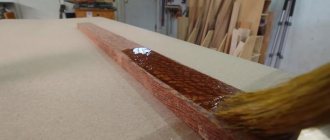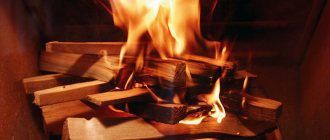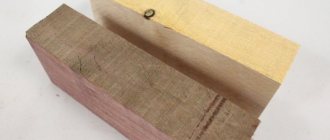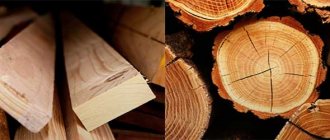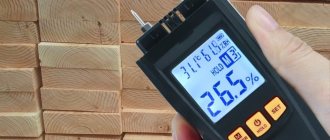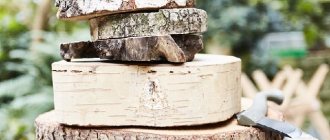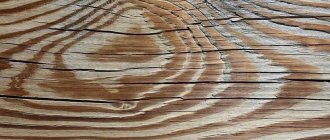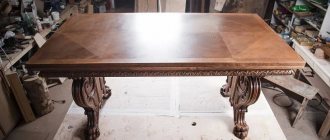The problem of preserving a wooden home, wooden furniture and other wood products has always existed. Especially where the humid climate contributes to the active prosperity of mold, fungi, putrefactive bacteria and other destructive biological factors. Various methods are used to protect wood. In this article you can read about one of them - simple, but very effective and popular among home and professional craftsmen - oiling wood. After spending about 14 minutes viewing the material, you will learn about the advantages and disadvantages of the method, how to use it, what types of oils you can buy and which manufacturers to pay attention to.
What is wood oil and why is it used?
Let's start answering this question from the second part. The motivation for using oil on porous wood surfaces was the obvious physical characteristics of oily liquids:
- water repulsion - up to complete non-wetting of oil-impregnated materials;
- good penetration into capillary volumes, accompanied by displacement of air.
Oil impregnation applied to wood penetrates deeper into the wood structure, the lower the density of its species. Gradually the oil polymerizes, giving hardness to the coating. Since the access to moisture and oxygen is greatly limited, it is easy to guess that for the vast majority of microorganisms, oil-coated wood will not be a favorable habitat.
What is wood oil? First of all, it is worth saying that this is a liquid product that is used for the protection and decorative finishing of wooden structures and products. All types of oil are easy to use and, when chosen correctly, provide good results.
Applying oil to wood The composition of oil used to coat wood can vary. It can be just oil: vegetable, mineral, combined. Or modified oil, that is, with additives that enhance certain properties. Recently, complex oil-based formulations containing solvents and solid particles have been increasingly used.
For example, it is worth adding wax to the oil mixture, and the wood will receive, in addition to protective impregnation, a fairly thick and durable coating. If stabilization of wood with oils should not lead to the formation of a noticeable surface coating, solvents are added to the composition. They allow you to saturate the wood to the maximum possible depth.
Wood finishing oils
Why soak cutting boards?
Mineral or petroleum jelly is considered best for impregnating cutting boards. The oil has no odor or taste, it will not go rancid and will not spoil the taste of food. Thanks to mineral oil, the board is reliably protected from the following troubles:
- absorption of unpleasant odors;
- the appearance of microbes, mold, mildew, harmful microorganisms inside the wood;
- the appearance of cracks and chips due to the dryness of the material.
The structure of wood is such that the liquid composition, penetrating inside, fills the pores of the material.
You should treat a new, never used cutting board, and then periodically renew the impregnation. Before applying the product, it is necessary to prepare the product. The board should be dry and its surface well sanded, without roughness. The liquid is distributed over all surfaces and ends using a brush or swab. You need to apply generously, for 15-20 minutes, then remove the excess with a swab, moving it along the fibers. If the board is new, then the treatment is carried out in 2-3 layers - each new layer is applied after the previous one has completely dried. Drying of the impregnation lasts from 10 to 12 hours.
Where are wood oils used?
The short answer to this question is that any type of wood in any space can be treated with oil-based compounds. That is, the treatment of wooden surfaces with oil can be carried out indoors for various purposes, as well as outside buildings and other objects located in the open air. As a rule, different types of oil are used for work in different conditions. However, there are also universal formulations.
Use wood oils
Wood oil for interior work
The wooden surfaces to be treated with oil compositions indoors can include: walls, floors, ceilings, furniture, window frames, doors and other structural elements.
Wood oil for interior work The main requirement that applies to all types of oils for interior work is safety for health. Therefore, they are all made on a natural plant basis. Safe compounds are also used as solvents:
- completely natural - for example, gum turpentine;
- synthetic, containing a large amount of ether compounds, which completely volatilize as they polymerize and harden.
The next requirement for oil depends on how heavy the load the surface will bear. For example, if the cabinet walls have almost no such walls, then the countertop wears out quite quickly, and the parquet floor requires special reinforced protection. But wood is most at risk in rooms with high humidity - in the kitchen and even more so in the bathhouse.
Wood oil for interior work Here, in order to prevent destructive rotting under the influence of mold, both a high rate of polymerization, leading to hardening of the oil, and a protective film are necessary. Therefore, for example, the composition of the oil for protecting shelves in bathhouses and saunas includes driers that accelerate polymerization, as well as various types of wax involved in creating a protective film. At the same time, taking into account the inevitable contact of the wooden surface with the body, only natural ingredients that do not cause irritation and allergies were selected.
Wood oil Finally, weighing all the pros and
disadvantages of oil for wood of one type or another, it is necessary to take into account that it is not only protection, but also a decorative finish for a wooden surface. There are oils on the market with different shades and different tinting densities:
- absolutely colorless, completely preserving the natural texture of wood;
- containing pigments with varying degrees of intensity of natural shades: from weak yellowish to fairly dark gray-brown;
- compositions with different color pigments and varying degrees of matting.
The depth and expressiveness of the tone of oiled wood depends not only on the initial color of the oil, but also on the number of layers applied.
Wood oil
Wood oil for exterior use
The oil used to protect wood exposed to the open air does not have to be natural. Mineral oils are quite suitable for technical structures - warehouses, sheds, fences, etc. They are based on refined petroleum products. Combination formulations consisting of a mixture of vegetable and mineral oils are also often used.
Wood oil Special mineral and combined oil-based compositions, as well as some technical oils that are not intended but used for application to wood, are not environmentally friendly and are not intended for residential premises. But with them, the tree is reliably protected not only from rotting in unfavorable conditions, but also from insects and rodents.
Oil for wood In the case when the facade of a wooden building in which there are people is to be finished, the pros and cons of different types of oil coatings must be weighed especially carefully. Since human health always remains the main selection criterion, natural oil is predominantly chosen. However, it makes sense to apply a mineral or combined composition to certain areas, especially those located close to damp soil.
Oil for facade GOODHIM If mineral oil does not have high decorative properties, then natural oil gives the wood a very dignified appearance. Many modern compositions make it possible to apply a coating tinted in a variety of shades to its surface. For example, completely natural facade oil has 15 such shades.
Wax Vaseline
Vaseline is a petroleum oil with tiny paraffin crystals suspended in it. Vaseline can be real or artificial. Real Vaseline has been extracted (since 1871) from higher fractions of petroleum by distilling off the light and part of the oil fractions until the remainder acquires a viscous consistency. Vaseline has a specific gravity of 0.870-0.885, a melting point of 36°.44 C. Viscosity at 50°C is from 4.5 to 8 according to Engler. The flash point, according to Brenken, is from 198 to 240 ° C.
Vaseline is a petroleum oil with tiny paraffin crystals suspended in it.
When distilled, Vaseline decomposes. It dissolves in alcohol only when heated, in ether and hydrocarbon substances - and in the cold. Ether solutions with fractional precipitation with alcohol make it possible to isolate solid paraffin (ceresin) components from petroleum jelly. Vaseline consists of a mixture of solid paraffins and mineral oil.
Vaseline is included in many cosmetic products - ointments, creams, masks, skin cleansers, decorative cosmetics (foundation, lipstick, eye shadow, etc.), and is also produced as an independent product.
In order to eliminate dry skin on the elbows, feet and lips, you should apply Vaseline to it several times a day and within a week the problem will disappear. In homemade cosmetics, you can also use Vaseline to prepare a scrub: mix a small amount of Vaseline with brown sugar or sea salt and treat problem skin, and then rinse everything with water.
To gently remove makeup, just apply a little Vaseline on a napkin and use it to remove any remaining makeup from your face. Vaseline has no side effects - it is even used to care for infants. The only contraindication is individual intolerance to the drug. Vaseline affects the degree of crystallization of the wax from which candles are made. It also gives them a more attractive appearance.
What types of wood oils are there?
Let's start answering this question with what natural vegetable oil can be. The first most popular is flaxseed oil. More often, this definition refers to linseed oil, a modification of linseed oil that is more convenient for practical use. The advantages of this oil: excellent absorption and good polymerization ability. Disadvantage: polymerization is slow. However, the process is accelerated by exposure to UV rays. In this case, the coating darkens, which some also consider to be a disadvantage.
OSMO Azure
The best in all respects relative to flaxseed oil is the oil that is obtained from tung tree nuts or walnuts, as well as camelina and teak oil. However, due to their high cost, they are used much less frequently. Sunflower oil, hemp oil, soybean oil and others are significantly inferior to flaxseed oil and are used extremely rarely in their pure form. More often they are used as raw materials for the production of drying oil.
Terrace Tikkurila Valtti
An oil-based wood finish may contain oil, wax, natural resins, solvents, pigments, and more. Solid components such as wax and pigments are suspended. They are often called dry residue, because when the coating dries, they form a more or less noticeable protective and decorative layer. Oil containing a high percentage of solids is thick. It is more suitable for wood with large, visible grains. For hard wood species, in which the fibers are almost invisible and impregnation is difficult, liquid oils with a very low percentage of dry residue are used.
Facade oil GOODHIM
Important. For very hard wood species, oil with a high solids content is not used, because it is poorly absorbed and may subsequently peel off.
TIKKURILA SUPI for floors
Also, a big problem with absorption is typical for coniferous wood. As long as the essential oils of wood are felt, resin is released, which can penetrate through any coating. There is only one way out of the situation - degumming using solvent treatment.
BELINKA façade
All types of natural oils can be produced with different percentages of solids. Modern technologies now make it possible to obtain even solid oil with a solids content of 100%. As for mineral oils, the process of polymerization, that is, hardening, is especially difficult for them.
Terrace oil GOODHIM
As mentioned earlier, mineral oils for wood are refined derivatives of petroleum products. Cleaning is sometimes so good that a safe and odorless substance is obtained - for example, petroleum jelly. It is good for everyone, but it does not polymerize and, accordingly, does not harden.
BELINKA for sauna
However, even in non-polymerized form, petroleum mineral-based protective oil does not wash off and works well in many extreme conditions. Railway sleepers and utility poles are impregnated with mineral oil. Mineral-based oil is very cheap, and in some cases even free - if you use already used oil.
AQUATEX BALM (“Rogneda”)
For example, engine oil from a car can be spread on piles that are dug into the shore, or they can also be treated with transformer oil. However, the use of these wood preservatives is limited for environmental and safety reasons. In addition, they have a strong and unpleasant smell. While natural oils have a pleasant natural aroma and are absolutely safe and environmentally friendly.
Terrace oil Healthy Home
And another disadvantage of wood treated with mineral oil is its unfavorable appearance: the natural color is lost and rapid or slow, but inevitable darkening occurs.
Popular mineral oils
Mineral oils are produced by many manufacturers, but it is rare to obtain a quality product. The most popular manufacturers are the following:
- RuChet-100. Russian-made mineral oil contains petroleum jelly, so it is used as a universal remedy. The product is completely safe and protects product surfaces for a long time. The product is mainly used for sharpening knife edges and for impregnating wooden or plywood cutting boards.
- Belinka-135. Produced by Russian manufacturers. It is characterized by depth of penetration and imparting a pleasant shine to wooden products. Protects kitchen utensils from destruction for a long time. Often used for household purposes.
- Hard Top Oil-265. Italian mineral oil is characterized by high wear resistance, long-term protection, and environmental safety. It has found application in processing both cutting boards made of wood and plywood, and for impregnating the handles of knives and butts of guns for hunting.
There are still many manufacturers of high-quality mineral oil for processing cutting boards and items that require protection. Impregnation products are sold in specialized stores and have instructions for proper use.
If you choose high-quality mineral oil and properly treat your cutting board, it will last for a long time. In this case, the product will be reliably protected from moisture penetration, the formation of harmful bacteria, the appearance of mold and mildew, cracking, and deformation. In addition, the use of effective products for wooden and plywood objects will preserve their original appearance for the entire period of operation.
Interesting: Danish butter is not from Denmark
Wood oil is a very interesting topic for manufacturers and DIYers. There are many recipes, widely known and secret. There are also a kind of folk-historical brands, the essence of which is difficult to explain. For example, teak oil, which is not made from teak, but is mixed from different oils with an indefinite number of additives. The historical homeland and authors of this good complex oil, which ideally should also include a part of tung, are unknown. And even eminent foreign manufacturers do not bother with having at least a minimal additive in the form of tung oil.
Danish oil is even more popular. On the Internet you can find recipes made by leading companies, as well as recipes for making them yourself in your home kitchen. This oil's affiliation with the country of Denmark is very relative: Denmark produced furniture from expensive wood, and post-war Americans really liked this furniture. Either there was not enough furniture for everyone, or it was necessary to bring respectable wardrobes and sideboards into line with the salary - one way or another, interested people from the company Rusting Ltd came up with an oil that turned widely consumed wood into noble wood. Needless to say, it was a very good oil. It gave the desired color and, although it did not form any visible coating, it was stable and durable. Even with effort, it was not easy to get to the essence of the wood. The principle and purpose of this excellent composition has been preserved to this day and has even been developed.
The Danish butter recipes available are full of variety - everyone can bring their best skills under this name. As with teak oil, the presence of a product called tung oil is extremely rare, but in both cases there is linseed oil.
How to prepare the mixture at home
If you were unable to buy the necessary impregnation for the boards in the store, you can easily make it at home, with your own hands. The simplest recipe is:
- buy Vaseline oil at the pharmacy;
- buy beeswax in a specialized store;
- combine 4 parts butter and 1 part wax, cut into pieces;
- melt the mixture in a water bath, stirring to ensure homogeneity;
- cool the product to room temperature;
- Use for wood processing, store in the refrigerator.
It is undesirable to replace beeswax with paraffin or stearin - the latter strongly clog the pores of the wood, which seriously impairs its vapor permeability and can provoke rotting.
How should wood oil be applied?
On an industrial scale, methods such as immersion in special baths are used to treat wood with oil. Sometimes under pressure and at elevated temperatures.
For home work everything is much simpler. You can successfully use your usual brushes and rollers. Some people use a spray gun. Treating a horizontal surface is especially simple: pour oil little by little and rub it in with a sponge, cloth or napkin. Useful application rules:
- When preparing the surface, grinding with 120-180 abrasives is used. To achieve a good result, be sure to vacuum the treated surface and not wipe it, as this will clog the pores. Shake the oil thoroughly before use.
- Oil is applied to wood in layers. The wood is coated as evenly as possible. Immediately or after 5 minutes, unabsorbed oil must be removed, preferably with a piece of cotton cloth.
- The first layer is dried especially carefully. For loose wood species, lint appears after the application of liquid oils. In this case, the surface is treated with sanding mats.
- Oil is preferentially applied to a horizontal surface with an upward motion, since it flows down on its own. When processing any surface, the final movements are along the fibers.
- Important. Do not apply different oils sequentially to a wooden surface during one cycle, as they may contain conflicting ingredients.
- When the oil dries, ensure good ventilation.
Attention! Cloths, sponges, brushes, napkins soaked in oil are prone to spontaneous combustion and therefore require proper disposal. They can be immersed in water or sealed in a tin without oxygen.
The nuances of processing plywood boards for cutting food
Unlike wood, plywood cutting boards are made from several sheets of wood that are glued together. Multilayer plywood material can be very sensitive to water, since the adhesive has low moisture resistance. For this reason, the product is prone to swelling, mold formation, the appearance of microbes, and destruction. To improve performance, it is necessary to treat the cutting board with products, the selection of which must be approached extremely carefully.
The plywood product must be well protected from water penetration, otherwise it will quickly become unusable. In addition, toxic glue can enter the human body, causing harm to health. A waterproof layer on the surface of the board will be created by mineral oil with beeswax added to it. You need to treat the plywood board with a soft brush or roller. Impregnation is applied to the material along the fibers, with the product located in a horizontal position. Several layers must be applied to a new plywood board, the optimal number is 3. Each layer takes approximately 12 hours to dry. If excess product appears on the product during the soaking process, it should be carefully removed with a soft cloth. It is recommended to treat the surface once a month to ensure that the cutting board remains safe for people. When properly treated, a plywood cutting board will last a long time without changing its appearance and remaining safe.
Where to buy high-quality oil for wood processing?
The best way to answer this question is by contradiction. That is, this means that you should not buy wood oil from an unstable trading organization without decent storage facilities - where no one is responsible for the quality of the goods offered and cannot present certificates of quality compliance. Obviously, the best oil is guaranteed to be bought in a store that sells products from well-known manufacturers. If you do not neglect the opportunities to get some benefit from the purchase, then there is another reliable option - purchasing the product directly from the manufacturer.
As practice has shown, it is in stores and online stores that have a direct connection with production that the most favorable price-quality ratios are observed.
For example, you can order, with delivery, wood oil through the GOODHIM sales department. You can order a small quantity or a batch. Wholesale, of course, will be cheaper. You can find out what variety of assortment is available today from the table.
Wood oils WOOD OIL from GOODHIM
| Oil type | Retail price for 0.75 l, rub. | Wholesale price for 0.75 l, rub. |
| Facade oil | 1144 | 915,20 |
| Terrace oil | 888 | 710 |
| Interior oil | 1723 | 1378,40 |
| Wood oil under normal conditions | 641 | 512 |
| Natural linseed oil | 662 | 529 |
| Oil for protecting shelves in bathhouses and saunas | 809 | 647,20 |
All wood oils WOOD OIL GOODHIM have a 100% natural composition, do not contain harmful additives and provide reliable protection of wood from mold, rot, and insects. Each product has a detailed description, including instructions for use.
Why is processing needed?
During daily cooking, the cutting board is subjected to serious stress. It is regularly scratched with a knife or a kitchen hammer; moisture, juices from vegetables and fruits penetrate into the pores of the material, and dish soap may not be completely washed out of them. The average period of use of wooden utensils is about a year, after which they lose functionality and attractiveness.
Special treatment of the cutting board with oil compounds allows you to fill the pores of the wood and prevent wetting, swelling, and deformation of the product. Impregnation also has the following purposes:
- prevention of absorption of unpleasant odors by wood;
- prevention of cracks, chips, and other defects;
- preventing the colonization of the material by harmful microorganisms;
- preventing rotting and microbial toxins from entering food.
With periodic use of impregnation, the service life of the cutting board increases, which will seriously save money, because such products are not cheap. Primary processing should be done immediately after purchasing the utensils, while they have not yet been used in cooking.
It is important not to wash the product before soaking, because oils can “lock” remaining moisture inside the wood fibers. To really extend the life of the board, it must be treated regularly.
What brands of oils are there on the Russian market?
It is impossible to answer this question absolutely accurately within the framework of one article - the range of wood oils on the Russian market is so rich and varied. Products from both foreign and domestic manufacturers are presented. Selectively, you can name such popular brands as:
- Belinka, whose wood oil is represented by a solid line and includes: sauna oil with paraffin, facade oil, oil with wax, yacht type oil - for harsh climatic conditions, multi-colored oil for decorative coating, as well as Belinka oil, safe for contact with food. .
- OSMO oil of the famous German brand represents the universal oil Azure, oils with hard wax: with quick drying, with a non-slip effect for the floor, as well as OSMO oil for countertops.
- Among the wood oils from the well-known company TIKKURILA, VALTTI oils are very popular: terrace - oil with white spirit thinner, oil for external use in harsh conditions, as well as universal oil.
- Products from domestic manufacturers are increasingly conquering the market, which not only develop unique compositions in their own scientific laboratories, but also launch a full cycle of their production.
The following wood oils are in great demand:
- Healthy House oil for terraces and floors produced by Lakra Sintez LLC;
- oil Aquatex Balsam “Rogneda”;
- natural GOODHIM oils: for baths and saunas, for facades, for terraces, for interiors, as well as universal linseed oil.
Price level for oils from foreign and domestic producers
| Oil name | Price in rubles per 1 liter |
| OSMO Azure | 4325 |
| TERRACE TIKKURILA VALTTI with organic thinner | 810 |
| TIKKURILA SUPI for floors | 1032 |
| BELINKA façade | 1290 |
| BELINKA for sauna | 1070 |
| Natural facade GOODHIM | 1525 |
| Terrace GOODHIM | 1184 |
| AQUATEX BALM (“Rogneda”) | 620 |
| Terraced Healthy Home | 460 |
The price of wood oil depends on many factors: the composition and quality of the components, and the covering ability. It should be borne in mind that wood oil is a very economical material and 1 liter is a fairly large amount.
What factors should be considered when choosing a particular option?
If you don’t know how to process the material, then when determining a solution you need to be guided by several criteria:
| terms of Use | Naturally, all elements located inside buildings are exposed to adverse effects much less than boards used in external structures. It should also be taken into account that inside buildings there are rooms with an unfavorable microclimate (for example, a bathroom and kitchen), which also require additional treatment |
| Material condition | For example, a heat-treated deck board does not need special protection, but as for ordinary materials, without additional work they will very quickly become unusable, and it is unlikely that they will be restored; damaged structures will have to be replaced |
| Location of nodes | Everything is simple here: if the board is visible, then most often a colorless composition or options are used that create an attractive coating. If the elements are hidden or located in the ground, then there is no question of external beauty; the most important thing is to ensure reliable protection and preserve the properties of the composition after treatment for the longest possible time |
| Features of the situation | At this point, various factors are taken into account: from financial capabilities, because the price of the compositions is often quite high, and large structures require significant volumes; the method of application is also important, because even when carrying out work with your own hands, you can use a brush, roller or spray gun |
Important! If processing the elements is difficult or impossible, then it is best to purchase a material that has undergone special processes in the factory and has increased resistance to adverse influences.
How to restore oil coating
After some time, the surface treated with oil wears off or changes color. The coating needs to be restored:
- reapply oil. All cracks and scratches will disappear;
- tinting is possible to give other shades;
- Repeat the procedure once a month;
- utensils that are rarely used are processed once a year.
How to use oil for impregnation.
How to properly impregnate
If the board is new, it is immediately treated with oil in 2-3 layers, with each subsequent one applied only after the previous one has been absorbed. Drying utensils is done in a well-ventilated area. The old board is pre-prepared: carefully sanded with the finest sandpaper to remove all large roughness. The product is thoroughly dried - not even a small amount of moisture should remain inside the wood.
After drying the board, apply oil generously with a brush, cotton swab or gauze swab over the entire surface and from the ends, after 20 minutes the excess is wiped off. Movements are carried out only along the fibers of the material. Apply impregnation in 2-3 layers 10-12 hours after each previous one.
Plywood boards also require special care. Unlike solid ones, they are made from thin sheets of wood glued together, and therefore are more sensitive to moisture. If done incorrectly, plywood boards quickly swell and mold settles between failures.
Such products are treated with mineral oils with the addition of beeswax, applying the product with a roller or a soft brush, after laying the board in a horizontal position. This work is carried out at least once a month.
